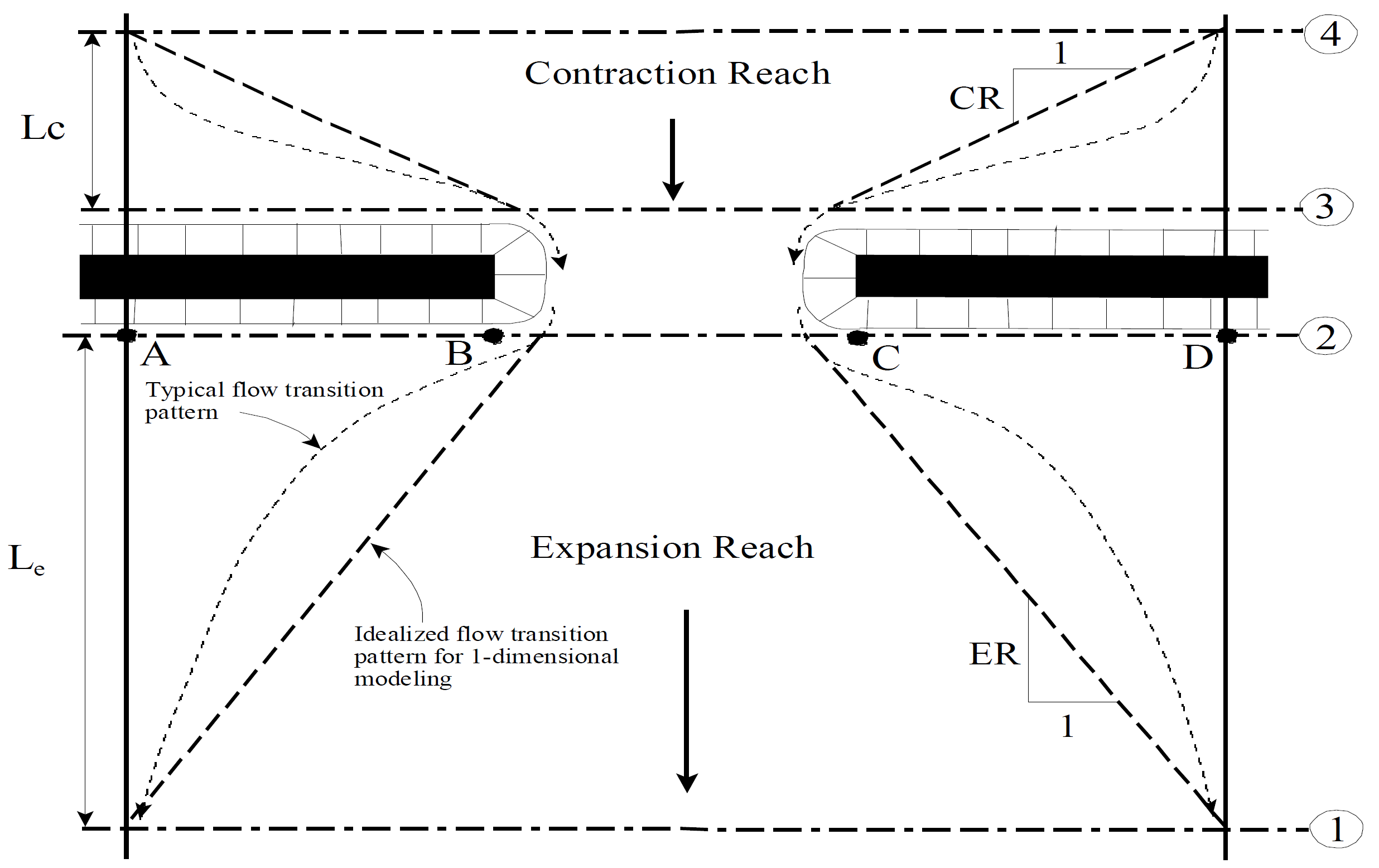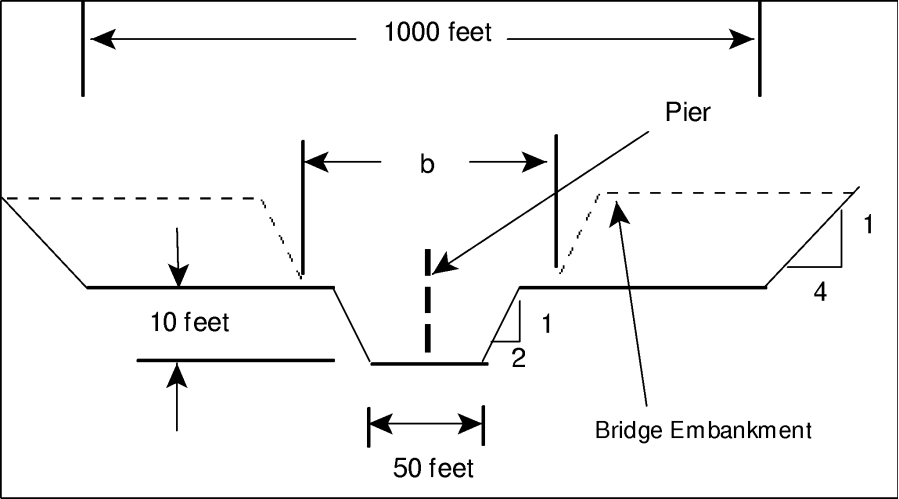Download PDF
Download page Flow Transitions in Bridge Backwater Analysis.
Flow Transitions in Bridge Backwater Analysis
Bridges across floodplains may require special attention in one-dimensional hydraulic modeling if they cause severe contraction and expansion of the flow. The accurate prediction of the energy losses in the contraction reach upstream from the bridge and the expansion reach downstream from the bridge, using one-dimensional models, presents particular difficulty. Modeling these reaches requires the accurate evaluation of four parameters: the expansion reach length, Le; the contraction reach length, Lc; the expansion coefficient, Ce; and the contraction coefficient, Cc. Research was conducted at the Hydrologic Engineering Center to investigate these four parameters through the use of field data, two-dimensional hydraulic modeling, and one-dimensional modeling. The conclusions and recommendations from that study are reported in this appendix. For further information regarding this study, the reader should obtain a copy of Research Document 42 (HEC, 1995).
The data used in this study consisted of 3 actual bridge sites and 76 idealized bridge sites. The field data had certain hydraulic characteristics in common. All had wide, heavily vegetated overbanks, with Manning's n values from 0.07 to 0.24, and slopes between 2.5 feet/mile and 8.0 feet/mile. To extend the scope and general applicability of the study, it was decided to create a large number of two-dimensional models (using RMA-2, King, 1994) of idealized floodplain and bridge geometries. The figure above shows a typical cross section for the idealized cases. The overall floodplain width was constant at 1000 feet. The main channel n value was constant at 0.04. The other pertinent parameters were systematically varied as follows:
Bridge opening width, b = 100, 250, and 500 feet
Discharge, Q = 5000, 10000, 20000, and 30000 cfs
Overbank Manning coef., n_{ob} = 0.04, 0.08, and 0.16
Bed slope, S = 1, 5, and 10 feet/mile
In addition to the systematic variation of these parameters, eleven additional cases were created which had vertical abutments rather than spill-through abutments, six cases were developed which had asymmetric rather than symmetric bridge obstructions, and four more cases were studied which were enlarged-scale and reduced-scale versions of four of the standard cases. A total of 97 idealized models were created.
Once the data were collected for all of the idealized models, they were analyzed with the aid of the statistical analysis program STATGRAPHICS (STSC, 1991). The goals of the statistical analysis were to compile summary statistics and develop regression relationships for the parameters of interest where possible. Table B-1 lists the summary statistics for the four parameters of interest.
Table B-1 Summary Statistics
Variable | Le | Lc | Ce | Cc |
|---|---|---|---|---|
Sample size | 76 | 76 | 76 | 76 |
Average | 564 feet | 386 feet | 0.27 | 0.11 |
Median | 510 feet | 360 feet | 0.30 | 0.10 |
Standard deviation | 249 feet | 86 feet | 0.15 | 0.06 |
Minimum | 260 feet | 275 feet | 0.10 | 0.10 |
Maximum | 1600 feet | 655 feet | 0.65 | 0.50 |
Range | 1340 feet | 380 feet | 0.55 | 0.40 |
The regression relationships were required to express Le, Lc, Ce, and Cc as functions of independent hydraulic variables which could be easily evaluated by the users of a one-dimensional model such as HEC-RAS. Some of the independent variables used in the regression analysis, such as discharge, slope, and roughness, had been set in defining each case. The other variables, such as Froude numbers, discharge distributions, velocities, depths, and conveyances, were evaluated from the HEC-RAS models, which had been developed for each case. The raw independent variables were then entered into a spreadsheet. In the spreadsheet other variables were created as ratios and multiples of some of the raw variables.
After the spreadsheet of independent variables was complete, it was saved as an ASCII text file, which was in turn converted into a STATGRAPHICS data file. Only the cases with symmetric openings and spill-through abutments were included in the regression analyses. Those cases which had asymmetric openings or vertical abutments, were later compared with the corresponding symmetric, spill-through cases.